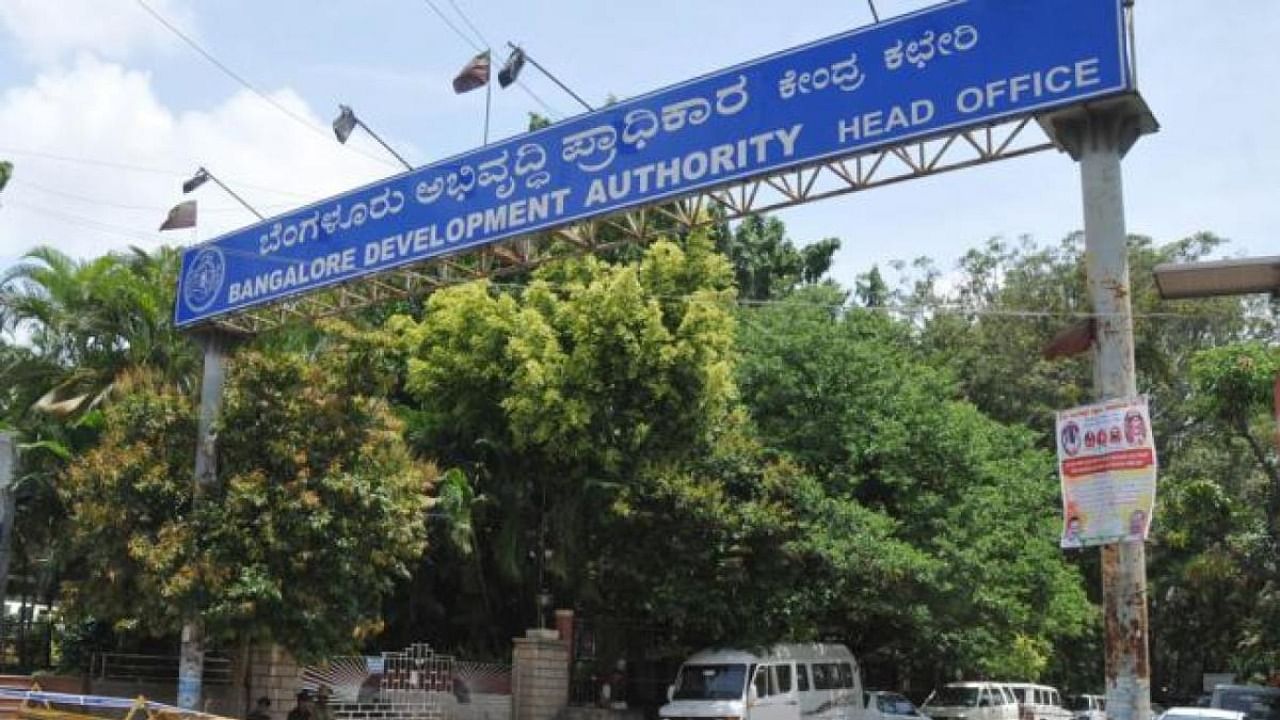
BDA board.
Credit: DH Photo
A master plan serves as a comprehensive guide for the spatial development of a city, encompassing industrial, commercial, residential, and mixed-use areas, with a focus on sustainable urbanisation. It is prepared to ensure that the development of the city is carried out while also providing for services equitably and ensuring optimal use of land, transport, and infrastructure. Cities rely on their respective master plans to
direct systematic and planned growth. However, the city of Bengaluru tells a different story.
The Bangalore Development Authority (BDA) is entrusted with the preparation of the master plan for Bengaluru. Presently, Bengaluru is guided by the Revised Master Plan, 2015 (RMP 2015). In 2019, the BDA issued the Revised Master Plan 2031 (RMP 2031), only to withdraw it in 2020, citing reasons for further revision. The Karnataka government stated in June 2023 that the blueprint for the BDA Master Plan would be prepared in six months. In October 2023, the BDA stated that it would commence groundwork for preparing a new RMP for Bengaluru. However, much remains to be done.
Master plans ought to be revised periodically to ensure that corrective actions are taken to rectify any errors that may have been made in the previous master plans. A delay in revision leads to unbridled and uncontrolled expansion of the city, resulting in encroachments by both private and government players and unchecked, massive violations. While master plans are required to be revised at least once every 10 years, it has always been a delayed exercise in Bengaluru’s case. The revisions of the second and fourth master plans were delayed by two years. Since 2020, attempts to prepare a new master plan have also been futile. Bengaluru, therefore, continues to struggle with potholes, traffic congestion, mismanagement of resources, loss of green cover, and massive encroachments.
A number of parastatal agencies, including BESCOM, BMTC, BMRCL, and BWSSB, play a vital role in the urban development of Bengaluru. However, a lack of coordination and cooperation between these agencies results in individualistic policies that run contrary to the master plan. For instance, the 2031 master plan was withdrawn because it was contrary to DULT’s transit-oriented policy.
Previously, the master plan on storm water drains prepared by the BBMP ran contrary to the BDA’s master plan. In this regard, it is imperative for the state government to mandate all departments to comply with the master plan and coordinate to avoid conflict.
Presently, the BDA has been approving development plans based on the outdated RMP 2015, which was prepared in 2006–2007, which is over 15 years ago. There are two fundamental problems with this. One is that this creates confusion about what happens if approvals are given in pursuance of the provisional RMP 2031. The Karnataka HC clarified in May 2023 that even though the provisional RMP 2031 has been withdrawn by the state government, it would not negate the actions that were taken in pursuance of it. Second, there are problems even with the implementation of RMP 2015. This is apparent from the frequent floods that are caused by construction on lake beds, Rajakaluve buffer zones, and other vulnerable areas that are otherwise protected under master plans.
A conversation on the importance of a master plan is important in today’s context, as its absence has led to several ad hoc development proposals, such as the creation of tunnels, satellite towns, extensions of metro rail service, construction of elevated ring roads, and decisions like making Kanakapura part of Bengaluru Urban and the creation of a revolving tower similar to the Eiffel Tower in Paris. These decisions will inevitably have far-reaching consequences for the city’s future. It is imperative
that these decisions be taken only after careful deliberations involving elected representatives and other stakeholders.
For a city marred by being the only metropolitan city to not have an updated master plan, Bengaluru speaks a lot more than it delivers. A recent study indicates that Bengaluru’s urban cover is likely to increase to 1,323 sq km, or 58 per cent, by 2025, which is nearly double the spread of 727,99 sq km, or 31.75 per cent, that was recorded in 2017, necessitating urgent measures to plan for the city. The government should also involve citizens in the planning process. Ward committees can be empowered to hold meetings on the master plan. However, a suggestion such as this seems futile to a city that has had no elections for the city council since the last three years. While “Brand” Bengaluru looks at re-envisioning how the city looks, it will not work until a proper master plan is in place. After all, the only alternative to the master plan is a better master plan.
(The writer is a senior resident fellow at the Vidhi Centre for Legal Policy)